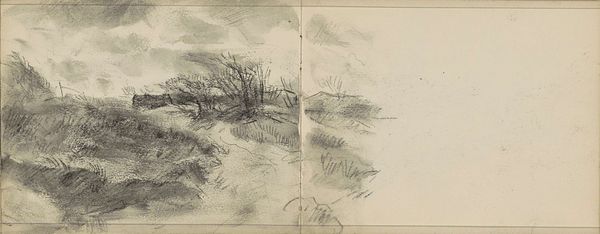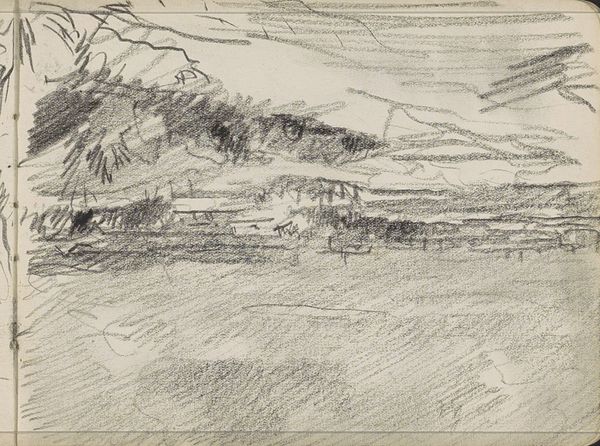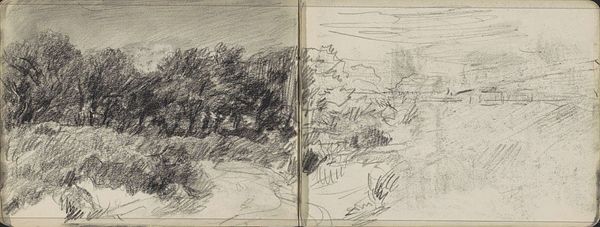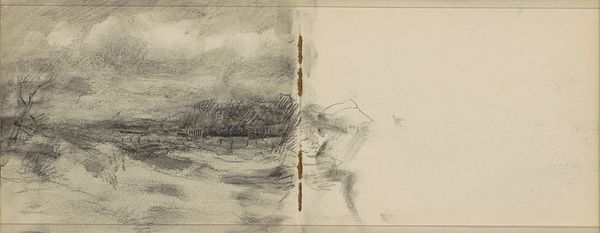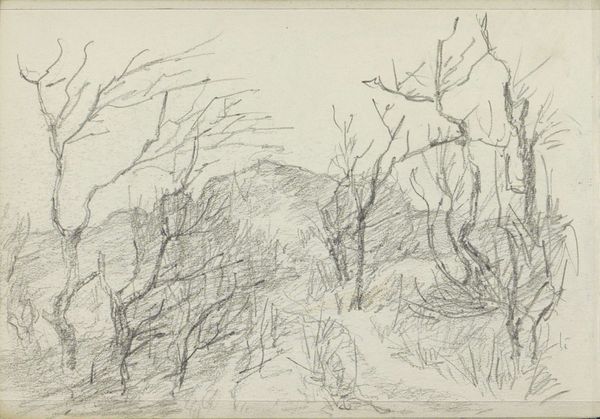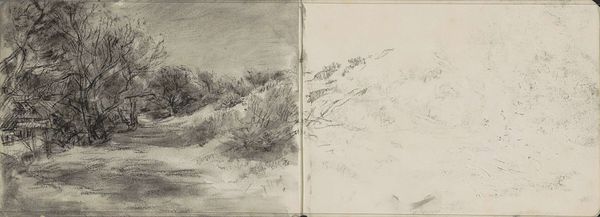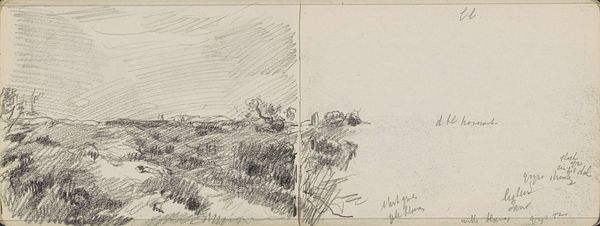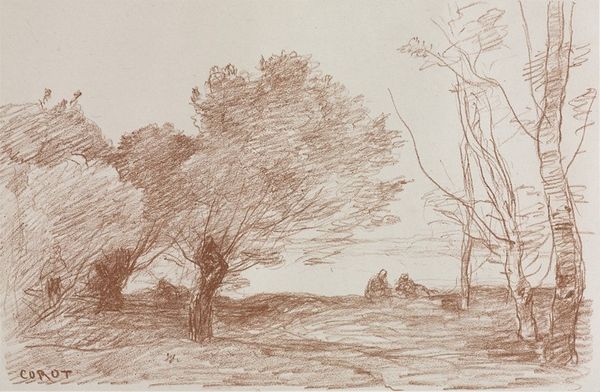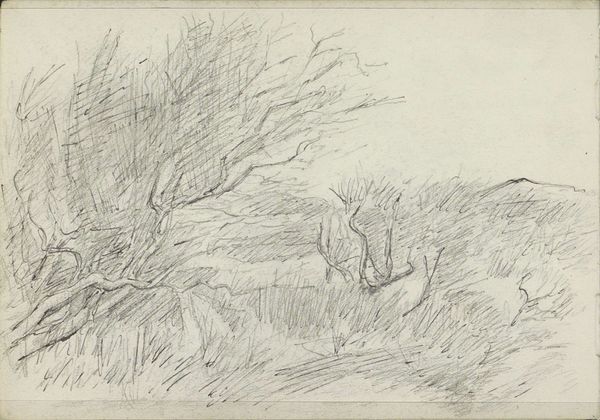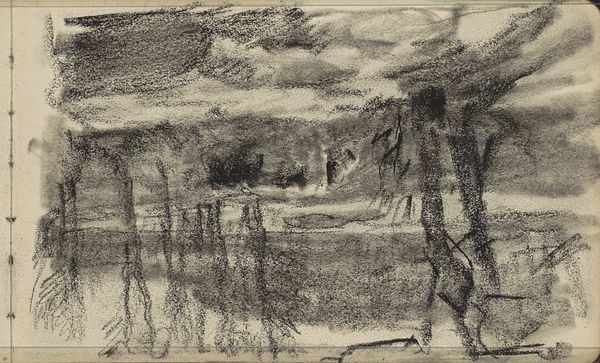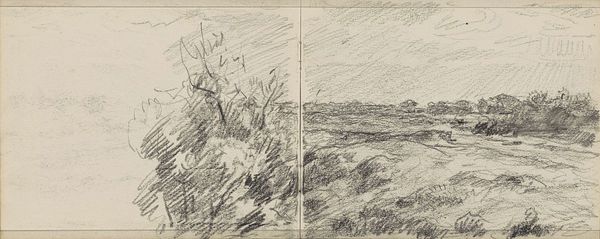
drawing, paper, pencil, charcoal
#
drawing
#
pen sketch
#
pencil sketch
#
landscape
#
paper
#
pencil
#
charcoal
#
northern-renaissance
Copyright: Rijks Museum: Open Domain
Editor: Johan Antonie de Jonge's "Landschap, mogelijk een duinlandschap," created sometime between 1881 and 1927, seems to be a charcoal and pencil sketch of a windswept landscape. There's a stark beauty to it, a kind of quiet resilience. The stark contrast of tones create an expressive but unsettling visual experience. What story does this landscape tell you? Curator: Ah, a whisper of wind across the dunes, indeed. To me, it speaks of a landscape both ordinary and deeply felt, rendered with an economy of means. Notice how de Jonge uses charcoal and pencil, a kind of layering of seeing. Almost like two different times of the day, don’t you think? Or maybe even two different perspectives… Editor: I hadn’t thought about it as two perspectives. Now that you mention it, one side is darker, more detailed, like a memory. The other feels lighter, a quick impression. Curator: Precisely! The leaning tree, almost skeletal, anchors the scene, doesn't it? It's fighting against the elements. The village in the distance? A fragile promise of habitation. De Jonge captured not just a place but a feeling, an almost melancholic reflection of human presence within a vast, untamed nature. Doesn't that bleak yet stark depiction of the natural word speak to something inside you? Editor: It does. It makes me wonder about his connection to this place, and what he was trying to communicate through the almost sparse and desolate atmosphere. Curator: That very question, my friend, is where the magic of art begins. Editor: Thanks, I definitely have a new appreciation for what might have seemed like a simple landscape drawing. Curator: Excellent. I always love finding depth in simple beauty!
Comments
No comments
Be the first to comment and join the conversation on the ultimate creative platform.
